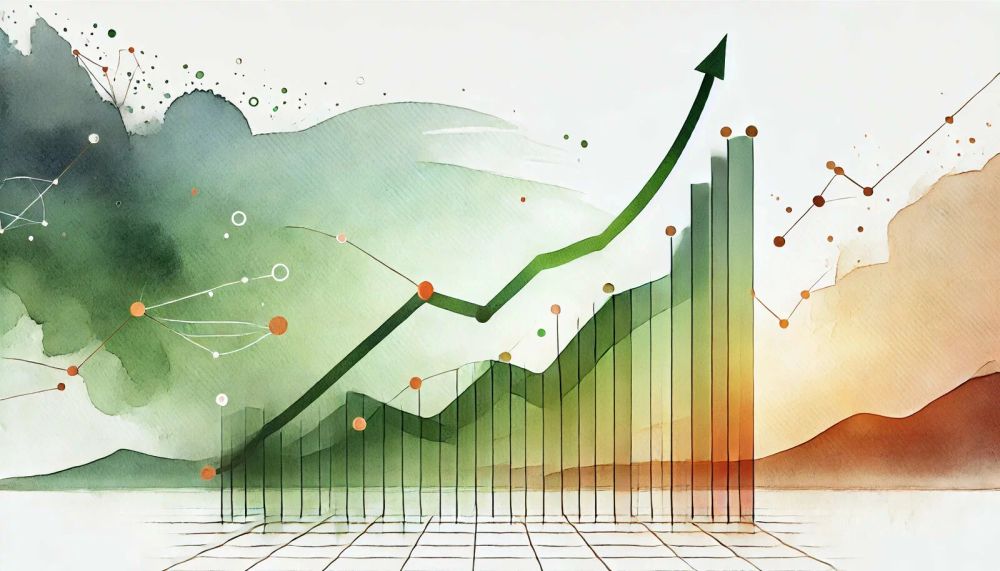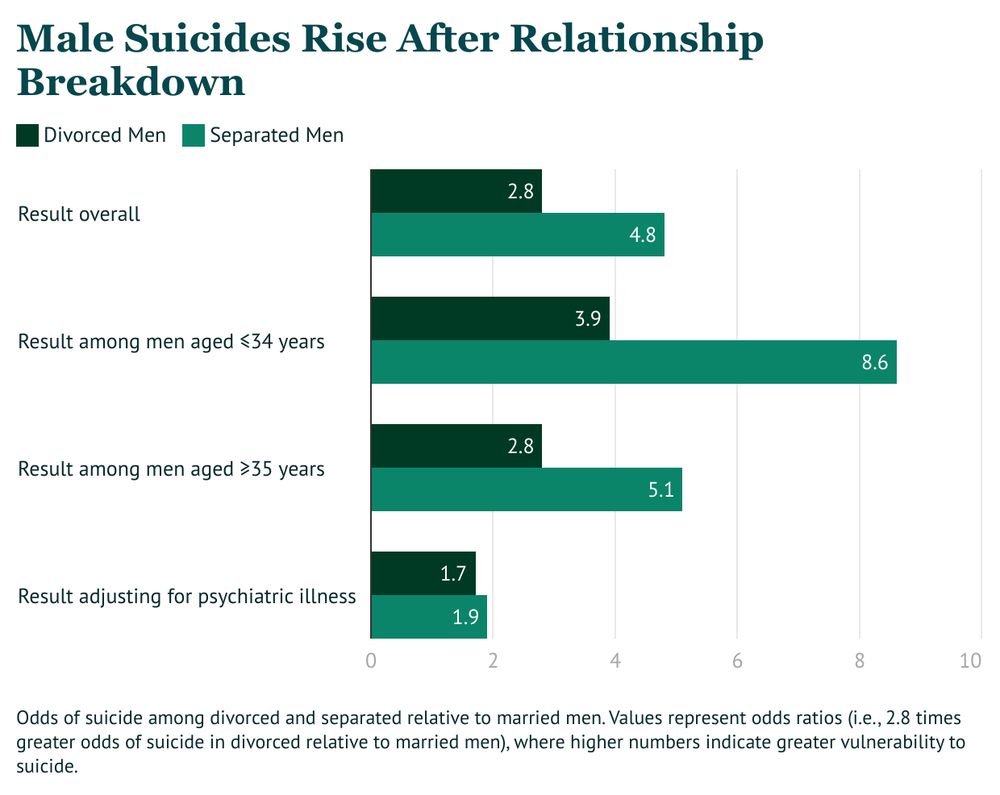
Gifted education can significantly improve outcomes for disadvantaged boys.
Boys just over the eligibility cutoff are 28 percentage points more likely to attend college than those just under.
@aibm.bsky.social
The only national research organization dedicated to issues affecting boys and men. The American Institute for Boys and Men conducts non-partisan research on issues that affect the well-being of boys and men across the United States.

Gifted education can significantly improve outcomes for disadvantaged boys.
Boys just over the eligibility cutoff are 28 percentage points more likely to attend college than those just under.

New Male Employment Data for September
The male #employment dashboard is updated! Explore the latest data on employment, unemployment, earnings, and more with interactive visuals.

One in five male suicides in the U.S. happened during or after a breakup, separation, or divorce from 2003 to 2020.
A review of 75 studies across 30 countries confirms this as a consistent risk factor.

Men in rural America are dying by suicide at much higher rates than those in big metro areas.
In 2023, Montana’s male suicide rate was nearly six times higher than D.C.’s.
Our brief explores this growing divide:

"Years of life lost" means how many years people would have lived if they hadn’t died early.
From 2001 to 2023, those lost years from suicide rose sharply for young men:
- Men 25–34: 191,000 to 308,000
- Men 15–24: 187,000 to 260,000
Read more:

Many boys who die by suicide had no prior mental health diagnosis. Often, they never asked for help.
Our new commentary offers practical advice for parents to support boys’ emotional wellbeing:

California has launched the Men’s Service Challenge, calling on 10,000 young men to serve their communities.
At AIBM, we recognize the importance of initiatives that align public service with well-being and long-term opportunity.
Learn more:

Suicide rates are rising among young men. Between 2010 and 2023, rates increased:
15–24: up 26%
25–34: up 31%
35–44: up 23%
Explore the data: aibm.org/research/dat...
7/7 If you or someone you know is struggling, you can call or text 988 for free, confidential support 24/7.
10.09.2025 16:34 — 👍 0 🔁 0 💬 0 📌 06/7 Learn more:
• Suicide by class and occupation
(aibm.org/research/male-suicide-trends-by-class-and-occupation/)
• Suicide deaths among young men
(aibm.org/research/data-spotlight-suicide-deaths-among-young-men/)

5/7 Life events also matter.
Separation and relationship loss are associated with elevated suicide risk, particularly for men in midlife.

4/7 Occupational trends show similar patterns.
Construction workers experience the highest suicide rates of any major group. Other high-risk fields include repair and maintenance, farming and fishing, and protective services.

3/7 Men without a bachelor’s degree die by suicide at more than twice the rate of college-educated men.
The gap is growing. Suicide rates have risen 53 percent for men without a degree, compared to 26 percent for those with one.

2/7 Suicide rates are four times higher among men than among women.
But risk is not evenly distributed. It varies significantly by age, educational attainment, occupation, and life experience.

1/7 Today is #WorldSuicidePreventionDay.
It is a time to raise awareness, share evidence, and recognize the urgent need for better support systems for those at higher risk of suicide, including boys and men.

We need more men in education, but only 17% of education bachelor’s degrees and 21% of master’s go to men.
Some programs are helping to close the gap. Explore our new piece to see institution-level data:

New Male Employment Data for August
The male #employment dashboard is updated! Explore the latest data on employment, unemployment, earnings, and more with interactive visuals.

Young men today often feel isolated and overlooked. Fraternal traditions, mentorship, accountability and shared values can help young men find the community they need.
Read our latest by Samuel J. Abrams: aibm.org/commentary/b...

Globally, men live shorter lives than women.Closing this gap means improving health care access and addressing the conditions that shape health for men.
Read more by Morna Cornell:

There is a lot of discourse about men and loneliness. But what does the data actually say?
Our researchers highlight the trends—and point out one big area of concern.
Read the full brief: aibm.org/research/male-loneliness-and-isolation-what-the-data-shows/

What does the data say about loneliness and isolation among men and women?
Our researchers find that the trends aren’t too different. However, there are concerning divides among those with college degrees and those without.
Read the full brief: aibm.org/research/mal...

Men’s health is rarely a focus of U.S. public health policy, despite higher male mortality and lower use of health services than women.
Other countries have adopted targeted strategies with results. The U.S. could benefit from a similar approach:

Are men truly more lonely and isolated than women?
Our researchers unpack the latest data and find some interesting—and some particularly concerning—trends.

Men around the world live shorter lives and face higher mortality than women, yet men’s health often gets little dedicated focus when it comes to public health policy.
Morna Cornell examines the evidence, the lessons from other countries, and what action is needed now:

New Male Employment Data for July
The male #employment dashboard is updated! Explore the latest data on employment, unemployment, earnings, and more with interactive visuals.

Smartphone gambling has turned every phone into a casino in your pocket.
In a new commentary, Jonathan D. Cohen and Isaac Rose-Berman examine the mental health and social costs of gambling apps and provide recommendations for limiting harms.
Read here:

California Governor Gavin Newsom issued an EO today to help address the mental health crisis impacting boys and young men in his state.
AIBM President @richardreeves.bsky.social joins him on his podcast to discuss these issues and more:

On Monday at 1 PM ET, the University of Chicago’s Parents' Day webinar will look at how parents influence family health and economic potential.
Professor Tamara McGavock will present on shared household labor and mental health, and AIBM President Richard V. Reeves on the role of fatherhood.

Compared to married men, divorced men had almost three times greater odds of death from suicide. Separated men had an almost five times higher risk.
This data reflects the intense emotional challenges that can follow relationship breakdown.
Learn more: aibm.org/commentary/s...